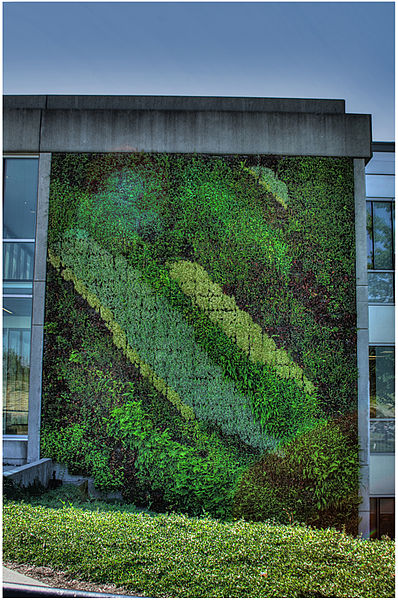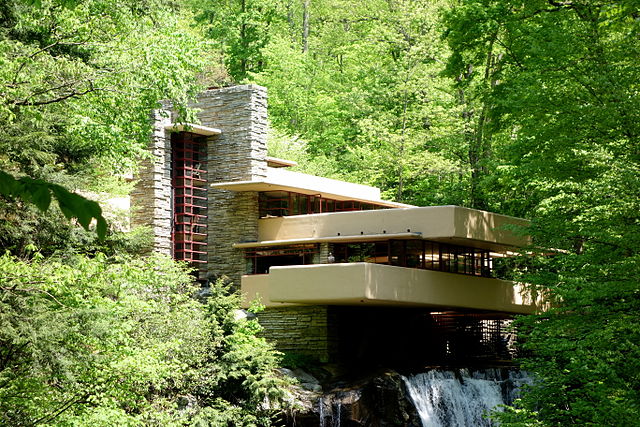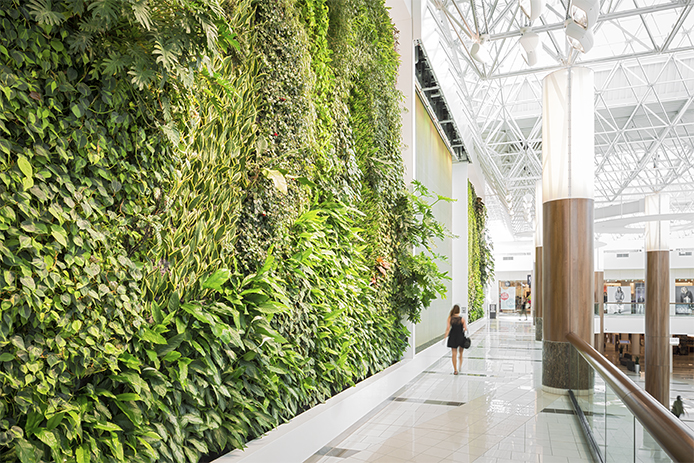
- Sustainable Planet -
- 9mins -
- 2,302 views
Biophilic design: what it is and why you should know about it
Discover how incorporating design features that reconnect people with nature into your home or workspace can drastically reduce stress, make you happier, healthier and even more productive.
Biophilic design: reconnecting humans with nature at home and at work
Biophilic design is a concept used within the building industry to increase occupant connectivity to the natural environment through the use of direct nature, indirect nature, and space and place conditions. Used at both the building and city-scale, it is argued that this idea has health, environmental, and economic benefits for building occupants and urban environments, with few drawbacks. Although its name was coined in recent history, indicators of biophilic design have been seen in architecture from as far back as the Hanging Gardens of Babylon.

biophilic design taps into—and harnesses—nature in the built environment
Nature was once all around us. Technically, it still is, but the quality of the nature that surrounds us has changed. According to the BDCNetwork (BuildingDesign+Construction), currently, 54% of the world’s population live in an urban environment; and by 2050, it’s estimated that percentage will have increased to 66%—two thirds of the world’s population!
Generally, humans spend 93% of our time indoors separated from natural elements. This issue represents an unhealthy byproduct of our current societal behaviour. As we continue to move toward the city and spend more time indoors, our day-to-day interaction with quality nature is shrinking. Ultimately, this is increasing our potential to experience psychological and physiological harm. How can we work to reverse this trend and improve the overall well-being of ourselves and our communities?
One concept is biophilic design, a strategic approach to tap into—and harness—nature in the built environment.
Source: BDCNetwork

Stephen Kellert’s framework for biophilic design
Considered as one of the pioneers of biophilic design, Stephen Kellert has created a framework where nature in the built environment is used in a way that satisfies human needs – his principles are meant to celebrate and show respect for nature, and provide an enriching urban environment that is multisensory. The dimensions and attributes that define Kellert’s biophilic framework are below.

1: DIRECT EXPERIENCE OF NATURE
Direct experience refers to tangible contact with natural features:
- Light: Allows orientation of time of day and season, and is attributed to wayfinding and comfort; light can also cause natural patterns and form, movements and shadows. In design, this can be applied through clerestories, reflective materials, skylights, glass, and atriums. This provides well-being and interest from occupants.
- Air: Ventilation, temperature, and humidity are felt through air. Such conditions can be applied through the use of windows and other passive strategies, but most importantly the variation in these elements can promote occupant comfort and productivity.
- Water: Water is multisensory and can be used in buildings to provide movement, sounds, touch, and sight. In design it can be incorporated through water bodies, fountains, wetlands, and aquariums; people have a strong connection to water and when used, it can decrease stress and increase health, performance, and overall satisfaction.
- Plants: Bringing vegetation to the exterior and interior spaces of the building provides a direct relationship to nature. This should be abundant (i.e., make use of green walls or many potted plants) and some vegetation should flower; plants have been proven to increase physical health, performance, and productivity and reduce stress.
- Animals: While hard to achieve, it can be done through aquariums, gardens, animal feeders, and green roofs.[8] This interaction with promotes interest, mental stimulation, and pleasure.
- Weather: Weather can be observed directly through windows and transitional spaces, but it can also be simulated through the manipulation of air within the space; awareness of weather signified human fitness and survival in ancient times and now promotes awareness and mental stimulation.
- Natural landscapes: This is done through creating self-sustaining ecosystems into the built environment. Given human evolution and history, people tend to enjoy savannah-like landscapes as they depict spaciousness and an abundance of natural life. Contact with these types of environments can be done through vistas and or direct interactions such as gardens. Such landscapes are known to increase occupant satisfaction.
- Fire: This natural element is hard to incorporate, however when implemented correctly into the building, it provides color, warmth, and movement, all of which are appealing and pleasing to occupants.
Source: biophilicdesign.net

2: Indirect experience of nature
Indirect experience refers to contact with images and or representations of nature:
- Images of Nature: This has been proven to be emotionally and intellectually satisfying to occupants; images of nature can be implemented through paintings, photos, sculptures, murals, videos, etc.
- Natural Materials: People prefer natural materials as they can be mentally stimulating. Natural materials are susceptible to the patina of time; this change invokes responses from people. These materials can be incorporated into buildings through the use of wood and stone. Interior design can use natural fabrics, furnishings, and leather.
- Natural Colours: Natural colours or “earth-tones”, are those that are commonly found in nature and are often subdued tones of brown, green, and blue. When using colours in buildings, they should represent these natural tones. Brighter colours should only be used sparingly – one study found that red flowers on plants were found to be fatiguing and distracting by occupants.
- Simulations of Natural Light and Air: In areas where natural forms of ventilation and light cannot be achieved, creative use of interior lighting and mechanical ventilation can be used to mimic these natural features. Designers can do this through variations in lighting through different lighting types, reflective mediums, and natural geometries that the fixture can shine through; natural airflow can be imitated through mild changes in temperature, humidity, and air velocity.
- Naturalistic Shapes: Natural shapes and forms can be achieved in architectural design through columns and nature-based patterns on facades – including these different elements into spaces can change a static space into an intriguing and appealing complex area.
- Evoking Nature: This uses characteristics found in nature to influence the structural design of the project. These may be things that may not occur in nature, rather elements that represent natural landscapes such as mimicking different plant heights found in ecosystems, and or mimicking particular animal, water, or plant features.
- Information Richness: This can be achieved by providing complex, yet not noisy environments that invoke occupant curiosity and thought. Many ecosystems are complex and filled with different abiotic and biotic elements – in such the goal of this attribute is to include these elements into the environment of the building.
- Change and the Patina of Time: People are intrigued by nature and how it changes, adapts, and ages over time, much like ourselves. In buildings, this can be accomplished by using organic materials that are susceptible to weathering and colour change – this allows for us to observe slight changes in our built environment over time.
- Natural Geometries: The design of facades or structural components can include the use of repetitive, varied patterns that are seen in nature (fractals). These geometries can also have hierarchically organised scales and winding flow rather than be straight with harsh angles. For instance, commonly used natural geometries are the honeycomb pattern and ripples found in water.
- Biomimicry: This is a design strategy that imitates uses found in nature as solutions for human and technical problems. Using these natural functions in construction can entice human creativity and thought of nature.
Source: biophilicdesign.net


3: Experience of space and place
The experience of space and place uses spatial relationships to enhance well-being:
- Prospect and Refuge: Refuge refers to the buildings ability to provide comfortable and nurturing interiors (alcoves, dimmer lighting), while prospect emphasises horizons, movement, and sources of danger. Examples of design elements include balconies, alcoves, lighting changes, and areas spaciousness (savannah environment).
- Organised Complexity: This principle is meant to simulate the need for controlled variability; this is done in design through repetition, change, and detail of the building’s architecture.
- Integration of Parts: When different parts comprise a whole, it provides satisfaction for occupants: design elements include interior spaces using clear boundaries and or the integration of a central focal point.
- Transitional Spaces: This element aims to connect interior spaces with the outside or create comfort by providing access from one space to another environment through the use of porches, decks, atriums, doors, bridges, fenestrations, and foyers.
- Mobility: The ability for people to comfortably move between spaces, even when complex; it provides the feeling of security for occupants and can be done through making clear points of entry and egress.
- Cultural and Ecological Attachment to Place: Creating a cultural sense of place in the built environment creates human connection and identity. This is done by incorporating the area’s geography and history into the design. Ecological identity is done through the creation of ecosystems that promote the use of native flora and fauna.
Each of these experiences are meant to be considered individually when using biophilia in projects, as there is no one right answer for one building type. Each building’s architect(s) and project owner(s) must collaborate to include the biophilic principles they believe fit within their scope and most effectively reach their occupants.
Source: biophilicdesign.net

The goal is to create living works of art that purify the air you breathe, make life more sustainable and add some green to the grey of our cities. Details ? Source: GreenOverGrey.com

